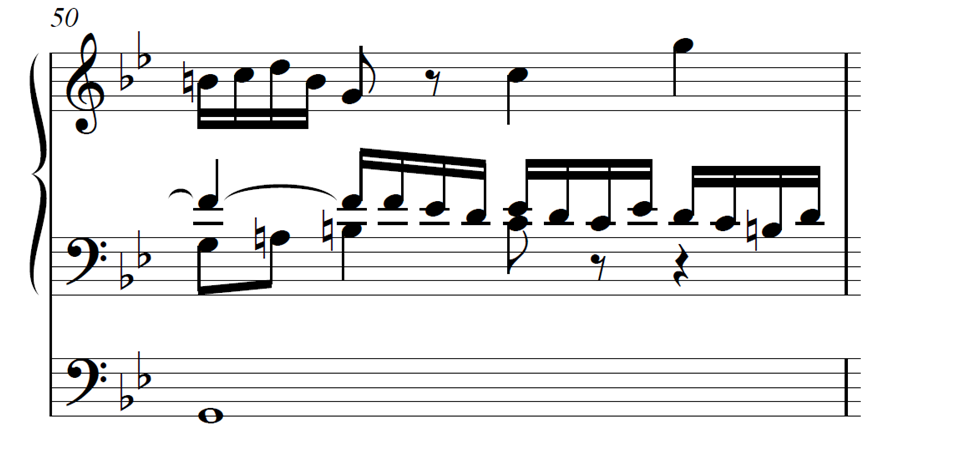
(see also Matrix Video)
The piece has a time compression factor of 1.95. See Manipulating Time I
This piece contains an unavoidable syntonic comma in measure 50:

The syntonic comma happens when the first C in the upper voice changes to D. At that moment the 'chord' G-G-F-C changes to G-A-F-D. In the matrix above, G-G-F-C has the shape:
| F | C | G |
And G-A-F-D has the shape:
| G | D | A |
| F |
One combined pitch assignment for these chords pivots around the common tone F:
| G | D | A | ||
| F | C | G |
So F remains unaltered and there are two different G's with a pitch ratio of 81/80 (= syntonic comma). That makes measure 50 sound as follows (the bass G suddenly descends slightly):
(descending syntonic comma in bass G)
The alternative combined pitch assignment pivots around the common tone G:
| F | C | G | D | A |
| F |
Here G remains unaltered and there are two different F's with a pitch ratio of 81/80 (= syntonic comma). That makes measure 50 sound as follows (the alto F suddenly rises slightly):
(rising syntonic comma in alto F)
Do you find any of these renderings acceptable? The piece as a whole is rendered with the bass G remaining unaltered, and the alto F rising by a syntonic comma.
You can download zipped .csv files containing the exact intervals used in this piece. Explanation of column headers.